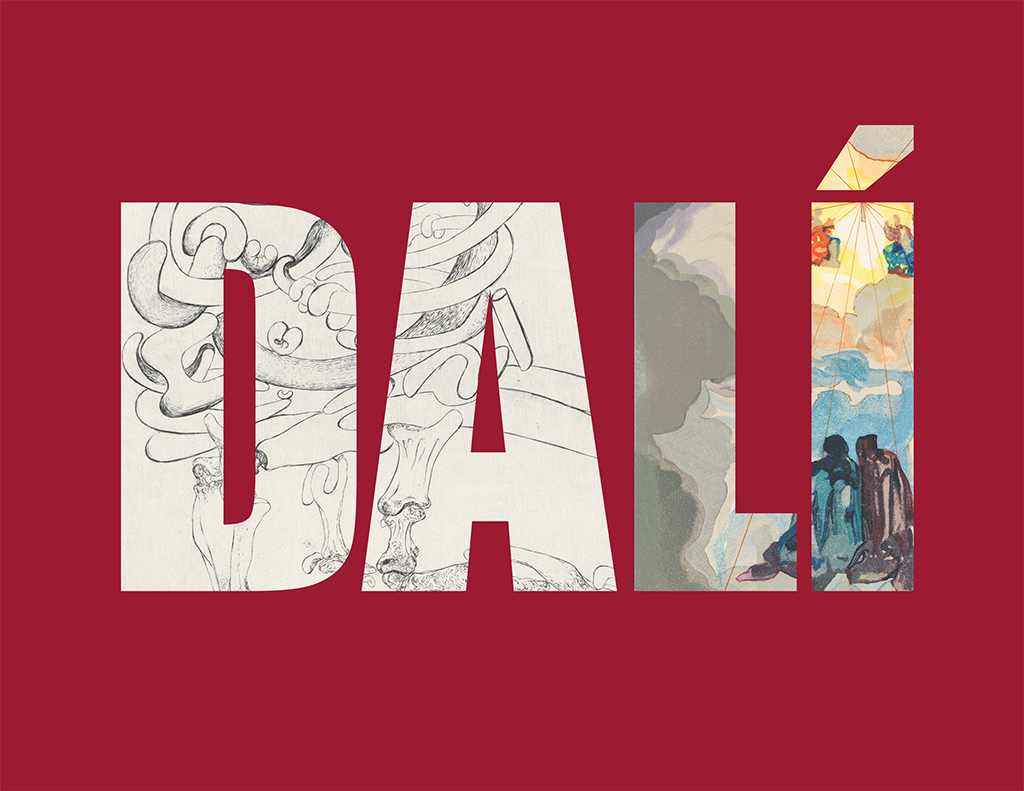Illustrations for Les Chants de Maldoror and The Divine Comedy
October 16 – November 15, 2019
Opening Reception: Wednesday, October 16, 5 - 7pm
Opening October 16 and continuing through November 15, the UTSA Main Art Gallery is host to Salvador Dalí’s Stairway to Heaven, curated by David S. Rubin. This exhibition demonstrates the artist’s obsessions with the threats and possibilities of evil and redemption and offers a fresh perspective on one of the titans of art history. On display are illustrations for a 1934 edition of Les Chants de Maldoror, a prose-poem by Comte de Lautréamont, first published in 1868 and later to become a surrealist favorite, as well as illustrations from a 1960 edition of Dante Alighieri’s The Divine Comedy, originally commissioned by the Italian government to commemorate the 700th anniversary of the poet’s birth.
Salvador Dalí (1904-1989) is perhaps best known for his surrealist paintings that fascinate audiences with extraordinarily strange, beautiful and often grotesque imagery that challenges normative structures of time, fractures ordinary boundaries of human embodiment, and depicts excesses of thought and expression. Surrealism, as an artistic movement, is well known for suggesting aspects of experience that delve into realms of dreams, fantasies, absurdities, fears, and desires. The French writer Guillaume Apollinaire is often recognized as coining the term, “surréalisme” in 1917, relative to the ballet Parade, created by Erik Satie, Jean Cocteau and Pablo Picasso, and his own play Les Mamelles de Tirésias. Surrealism has come to describe works that extend beyond realistic representations through surprising juxtapositions and suggestions of the workings of the subconscious mind.
Early in his life, Dalí characterized himself as an amoral nihilist, who favored free association and the exploration of the most primal human instincts. This part of his life is reflected in his illustrations for Les Chants de Maldoror, a poetic text describing violence, cannibalism and debauchery. In the early 1930s, Pablo Picasso suggested to the Swiss publisher Albert Skira that he commission Dalí to create a series of intaglio prints for a new edition. In true avant-garde fashion, Dalí chose not to respond directly to specific passages in the text, but to pursue free interpretations that echo his Surrealist paintings of the period.
The selection of Dalí as illustrator of The Divine Comedy was controversial because he was not Italian and because his reputation as a nihilist put him at odds with the text’s redemptive message. The Divine Comedy has become one of the most significant texts of world literature. Ultimately, while Dalí was not chosen for the project, he nevertheless continued his work on the project, as by this time in his life, his work was much influenced by an earnest interest in Christianity, spirituality, and mysticism. In the text, Dante imagines, in first-person narration, the journey in three realms of the afterlife from Inferno, through Purgatorio, to the soul’s redemption in Paradiso. Rubin suggests that “in illustrating Dante's The Divine Comedy, Dalí may have found a saintly path to finding his own personal redemption.”
In addition to the exhibition, UTSA student composers enrolled in the New Music Lab, a composition and chamber music course taught by Dr. Chris Prosser, are conducting research into the history of surrealist practice in visual art and music with a focus on exploring instrumental and vocal extended techniques to compose a new composition based on the Dali illustration(s) of their choosing, which will be performed on Wednesday, December 4 at 7:30 pm in the Recital Hall.
Gallery hours are Tuesday-Friday, 10am – 4pm, Sat 1- 4pm, and by appointment; Closed Sun/Mon
Exhibitions are free and open to the public.
UTSA Main Art Gallery
Department of Art & Art History
One UTSA Circle San Antonio, TX 78249
Contact: art.events@utsa.edu or 210-458-4391
Driving Directions:
The UTSA Art Gallery is located in the Art Building on UTSA’s Main (1604) campus. From I-10, take Exit #557 to UTSA Blvd. Metered parking is available in the Ximenes Ave Garage. View the Parking Map.


